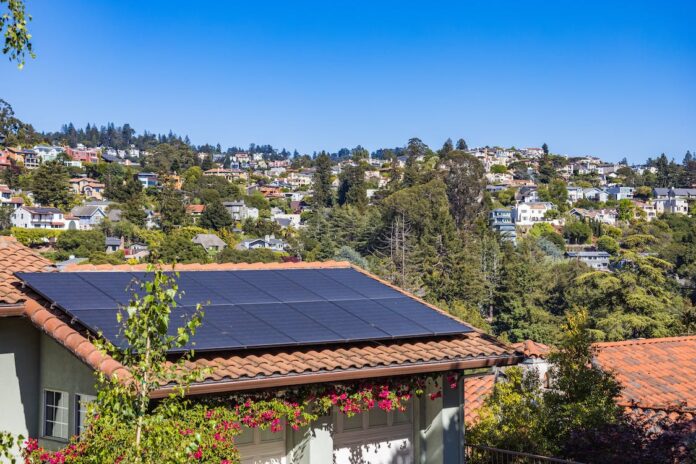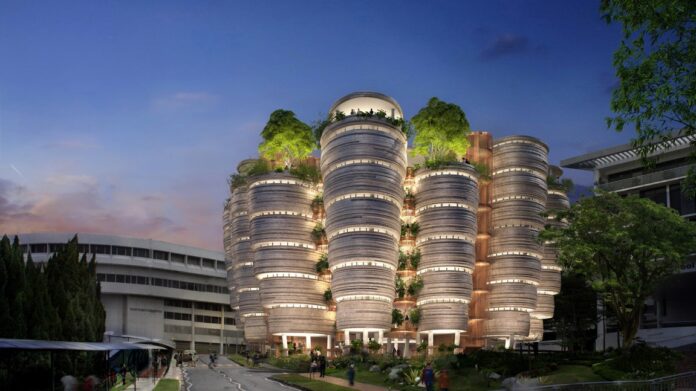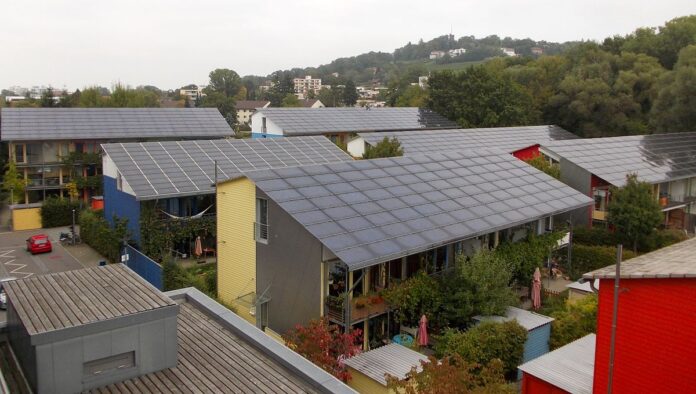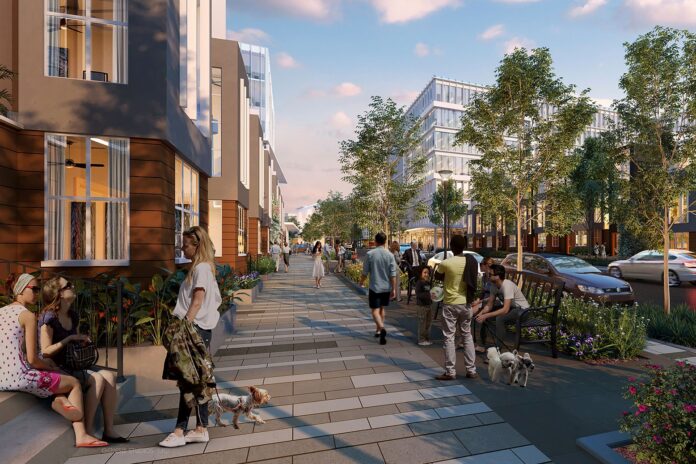
In the pursuit of a sustainable future, the concept of environmental architecture has emerged as a powerful force shaping the development of greener cities. The environmental architecture combines the principles of sustainable design, energy efficiency, and ecological consciousness to create urban spaces that harmonize with nature while addressing the pressing challenges of climate change and urbanization.
By seamlessly integrating innovative building techniques, renewable energy systems, and thoughtful urban planning, environmental architecture plays a pivotal role in transforming cities into vibrant, resilient, and environmentally responsible hubs.
1. Sustainable Design

Sustainable design has become a transformative force in redefining urban spaces, paving the way for greener and more livable cities. This approach challenges conventional architectural practices by prioritizing environmental responsibility, resource efficiency and social well-being. Sustainable design principles aim to minimize the ecological footprint of buildings and infrastructure, integrating renewable energy systems, optimizing energy and water usage and utilizing eco-friendly materials.
Beyond environmental considerations, sustainable design also emphasizes creating spaces that promote community interaction, health and connectivity. By embracing sustainable design, urban spaces are reimagined as lively, spirited and harmonious environments that balance human needs with the preservation of natural resources, setting the stage for a sustainable urban future.
2. Integrating Nature
In the pursuit of greener cities, the integration of nature through green infrastructure, complemented by the principles of environmental architecture, has emerged as a pivotal strategy for sustainable urban development. Green infrastructure, encompassing features such as green roofs, vertical gardens, urban parks and permeable surfaces, strategically incorporates natural and semi-natural elements into urban environments. When coupled with the design principles of environmental architecture, this integration becomes even more powerful.
Environmental architecture emphasizes sustainable building techniques, energy efficiency and ecological consciousness, thereby amplifying the positive impact of green infrastructure. By seamlessly blending natural elements with architectural design, environmental architecture not only enhances the aesthetic appeal of urban spaces but also addresses pressing environmental challenges. It helps mitigate air and water pollution, combat the urban heat island effect and conserve biodiversity.
Moreover, by incorporating green spaces and biophilic design, environmental architecture fosters a deeper connection between individuals and the natural world, promoting mental and physical well-being. The harmonious integration of green infrastructure and environmental architecture reshapes cities into sustainable and inviting habitats that prioritize both human needs and environmental preservation.
3. Energy Efficiency

Energy efficiency stands as a cornerstone in the pursuit of greener buildings, playing a crucial role in reducing energy consumption, lowering carbon emissions and fostering sustainability. With environmental concerns at the forefront, architects and designers have embraced innovative techniques and technologies to create buildings that maximize energy efficiency.
Through careful insulation, optimized heating and cooling systems, efficient lighting and smart building management systems, energy-efficient buildings minimize energy waste and optimize resource usage. Also, renewable energy integration, such as solar panels and geothermal systems, further enhances their sustainability by harnessing clean and renewable sources of power.
Energy-efficient buildings not only contribute to mitigating climate change but also yield significant economic benefits by reducing operational costs for occupants.
4. Climate Resilience
As the impacts of climate change become increasingly evident, the concept of climate resilience has gained prominence in building design and urban planning. Climate resilience involves anticipating and adapting to changing environmental conditions to minimize risks and maintain functionality in the face of climate-related challenges.
Architects and urban planners are incorporating resilient design strategies to ensure buildings and cities can withstand extreme weather events, rising sea levels and temperature fluctuations. This includes using sustainable and durable materials, implementing efficient stormwater management systems, creating natural barriers against flooding, and designing flexible and adaptable spaces.
By integrating climate resilience into building practices, communities can reduce vulnerability, protect infrastructure and safeguard the well-being of their residents.
5. Urban Planning and Walkability

Urban planning plays a crucial role in shaping cities that prioritize walkability and create vibrant, pedestrian-friendly environments. By emphasizing walkability, urban planners aim to reduce dependence on cars, promote active lifestyles and enhance the overall quality of urban life. Pedestrian-friendly cities are designed with a network of safe, well-connected sidewalks, pedestrian crossings and dedicated paths for walking and cycling.
Also, urban planners focus on mixed-use zoning, which integrates residential, commercial and recreational spaces in close proximity, reducing the need for long commutes and enabling residents to access amenities and services on foot easily. The incorporation of green spaces, public parks and urban plazas further enhances the pedestrian experience, providing places for relaxation, social interaction and recreation.
6. Water Management
Water management is critical to creating sustainable urban environments that can effectively address water scarcity, flooding, and water pollution challenges. Innovative approaches in water management are revolutionizing the way cities utilize and conserve water resources.
Sustainable urban living relies on strategies such as rainwater harvesting, greywater recycling and stormwater management systems to reduce dependence on freshwater sources and minimize water waste. These innovations help replenish groundwater, reduce strain on existing water infrastructure and mitigate flooding risks by effectively managing stormwater runoff.
Furthermore, green infrastructure elements like bioswales, permeable pavements and constructed wetlands promote natural filtration, enhancing water quality and restoring ecosystems.
7. Community Engagement

Community engagement plays a vital role in empowering citizens and driving the success of the green city movement. As cities strive to become more sustainable, it is crucial to involve and mobilize residents, businesses and community organizations in the decision-making processes and implementation of sustainable initiatives.
Through inclusive platforms, such as public consultations, workshops and partnerships, community members can actively contribute to shaping their urban environment. Engaging citizens in the green city movement fosters a sense of ownership, pride and responsibility towards the sustainable transformation of their neighborhoods. It encourages behavior change, promotes the adoption of eco-friendly practices and facilitates the sharing of knowledge and ideas among community members.
Moreover, community engagement strengthens social cohesion, builds trust and promotes collaboration among diverse stakeholders, leading to innovative solutions and greater resilience.
Greener cities and sustainable urban development are diverse endeavors that necessitate the incorporation of numerous philosophies and techniques. Throughout this exploration of the role of environmental architecture in shaping greener cities, you can see the transformative power of sustainable design, the significance of integrating nature through green infrastructure, the importance of energy efficiency in powering greener buildings, the necessity of climate resilience in a changing environment, the value of walkability in creating pedestrian-friendly cities and innovations in water management for sustainable hubs.








